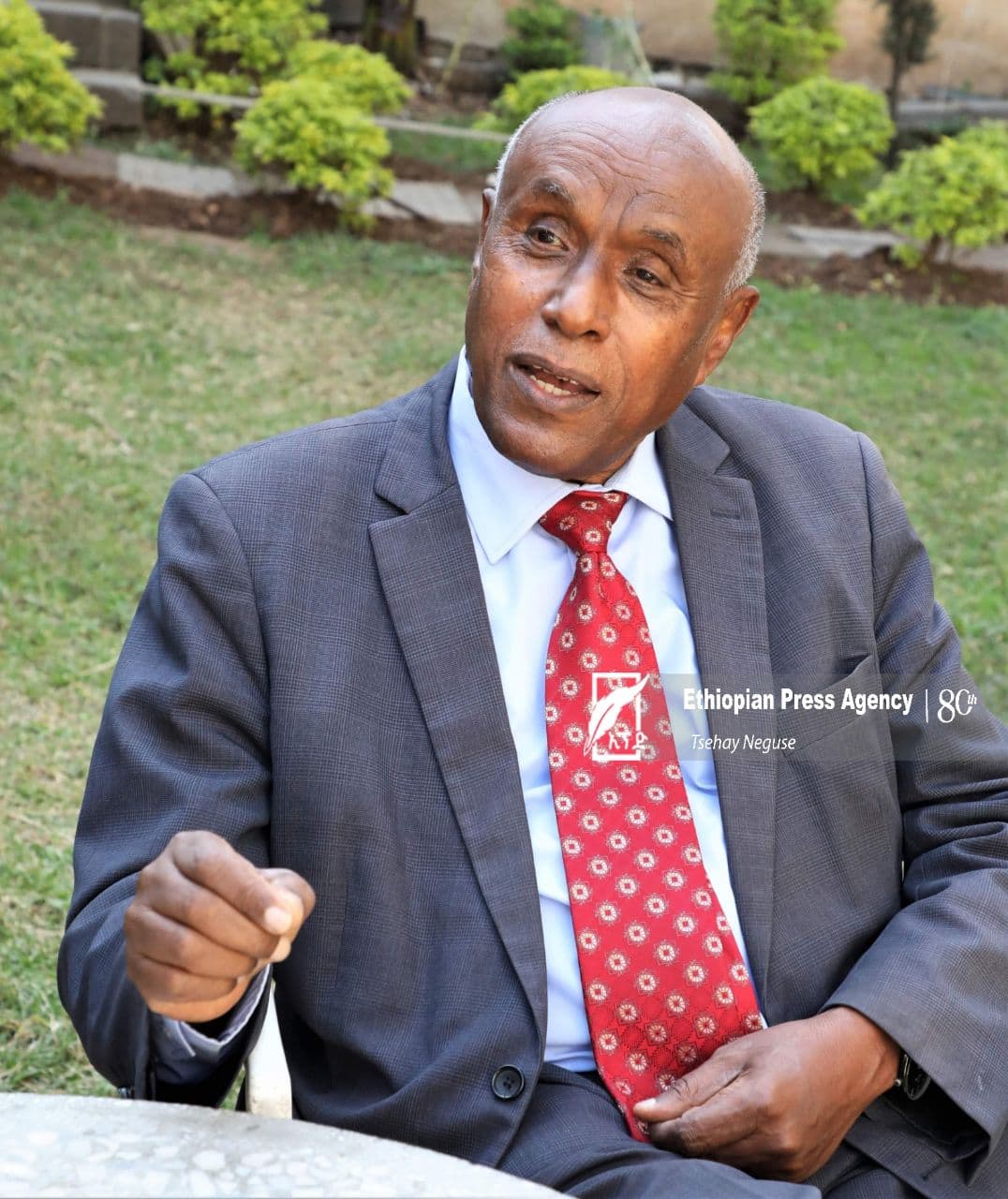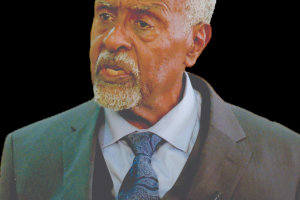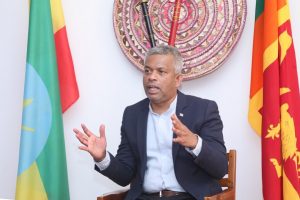
BY GIRMACHEW GASHAW
Today’s guest Tilahun Tassew was born in Addis Ababa around Kasanches area. He grew up in Dessie and Addis Ababa. He earned a Bachelor Degree in public administration minoring in sociology and anthropology. He also made another MA in Development Studies.
Tilahun is now owner and General Manager of TTMC Management Consultancy & Training Service PLC. Expressed himself as an ardent reader of history, he wrote various books in Amharic and English.
Tilahun recently published a book entitled: Emperor Menelik II: The Military Strategist and Diplomat Who Changed the Course of History. In connection with the 125th Adwa victory anniversary, The Ethiopian Herald spent a few times with him and raised a range of issues directly or indirectly related to Adwa victory. Excerpts:
As a history enthusiast, would you tell us your contributions in the history of the country? How do you see our historical narration? Some people seem to say Ethiopian history is controversial and that is why the EPRDF led government removed it from the satellite broadcasted education. Is it really controversial? If so, what is a basic reason?
In the last 38 or 39 years I have published books in Amharic and English that delt with the First and the Second Ethio-Italian wars. I specialize in the military and diplomatic history of the wars. My novels, in addition to battle stories, deal with the social, psychological and economic impact of the battles on citizens and communities.
Let me deal with the assertion that Ethiopian history is controversial. History cannot be controversial unless used to advance ideological agendas. Let me be blunt. The Cold War era ideology has impacted Ethiopian history than religious ideologies. Ethiopian students during the Cold War era tried to understand the Ethiopian society from the perspective of an immature Marxist-Leninist-Stalinist-Maoist political economy. That led young students, including me, to aspire to socialism rather than liberalism.
This led to simulate Ethiopian history from the perspective of the political struggle in Russia, China, Vietnam and Cuba which led to distortions of the facts on the ground. This trend was exacerbated when the Military Junta, allied with Soviet Union, purged and forced the numerous Marxist-Leninist-Maoist political parties to hide or run to the hills to form liberation movements of their ethnic origins.
They became “National” Socialists. Fostering infantile communist ideological agenda emphasizing the uniqueness of their ethnic groups and mobilizing their societies social, economic and historical pillars as tools of ethnic chauvinism ended in embracing a form of third world fascism. Most of the so-called Liberation Movements in Ethiopia have this origin. They rewrote Ethiopian history as befits their “ethnic ideology”. I think the clash was between Marxist Political Economy and standard historical methodology.
You asked me why EPRDF removed lessons in Ethiopian history from plasma television assisted teaching. I have not studied the issue but I can throw some explanations which might have relevance to the issue. The numerous ethnic socialists found it difficult to form ‘Ethiopian Soviet Socialist Republics’ copying USSR when EPRDF took political power.
They came to power in the wake of the defeat of the Soviet Union. They failed to promote “Democratic Nationalism” which in Marxist-Leninist ideology will be loyalty to the Soviet Union in line with Proletarian Internationalism.
Thus to lull the capitalist west, they reverted to the application of the European Union model to Ethiopia. This weak and fake simulation might have made impossible to come up with a common historical narration for this thousand year’s old country. That was the culmination of the tragedy.
You have authored a number of books including Emperor Menelik II: The Military Strategist and Diplomat who Changed the Course of History. What inspired you to write these books?
As a history student what more will inspire one other than great battles and heroic achievements? Menelik, five years prior to the Battle of Adwa, announced to each of the signatories of “The Scramble for Africa”, that he will not allow them to occupy Africa which mostly is his domain. He used Africa and Ethiopia interchangeably in his letter. True to his words in the three months battle he defeated Italy.
Then he turned his attention to Britain and frustrated the dream of Cecil Rhodes to colonize Africa as British territory. The number of soldiers involved in these battles were huge and unseen in prior battles fought in the world. What more will inspire one than a great battle that saved the black race from being swept away like the Red Indians of the Americas and the Aborigines of Australia?
Except few, most of your books focus on Ethiopian history? Why?
That is simple. I am an Ethiopian.
You dedicated one of your books to the current and future generations who are positively inspired by monumental historical achievements of great leaders. What do you mean by that? Why?
Our generation was inspired by the two European traditions of Socialism and Liberalism and most active youth including me were motivated by Socialism. That happened when the two superpowers the USSR and USA made Africa their battle ground. Student movements in the 1970s were pro Soviet Union or Vietnam or Cuba. The present generation is not a victim of the Cold War which became the driving force of the post Second World War.
Present generations are being inspired by monumental historical achievements like the Victory of Adwa and the defeat of Fascism by Emperor Menelik and Haileselassie. I admire the young generation. For example the present day youth is inspired by Haile Selassie’s achievement to unify Eritrea, thus enabling Ethiopia access the Red Sea and the establishment of a powerful Imperial Navy.
Italy curved out Eritrea as a colonial state six years before the Battle of Adwa and the people in what we call Eritrea have participated heroically in the Battle of Adwa. Ethiopia needs to inculcate in its new generation appreciation of its rich history and create generations which are inspired with monumental historical achievements of its great leaders.
Many books have been written in connection with Emperor Menelik II. Thus, what makes your book peculiar? Does it come up with histories yet covered by previous authors? If so, please mention some of them?
Prominent Ethiopian writers of the past on Menelik II are his chronicler Gebreselassie and later Tekle Tsadik Mekuria and Paulos Geongo. Currently many patriotic writers are coming up with books some emphasizing on the personality of Menelik and some like Negussie Ayele Teka on detailed diplomatic achievements of Menelik with the USA. My English and Amharic books on the period emphasize the military and diplomatic achievements of Menelik.
I mainly depend on Ethiopian documents and writing rather than European writers. As analytical history it puts the period in the international and national environment taking a deeper analysis than most other books.
Do you have a plan to publish other books? If your answer is yes, please mention some of them.
Yes of course. I also have a small book on Nanotechnology and its impact on the reorganization of society. I am also a novelist who writes on issues dealing with the Ethiopian Patriotic Era. Trying Times published by Shama books and the Amharic Adabai are historical novels. I hope I will write some novels and some historical treatise if I get time and of course God willing.
How do you express the commitment, courage, enthusiasm and wisdom of the then Ethiopians who defeated Italians and ensured sovereignty of the country?
Allow me to be blunt again. I do not believe that Ethiopians are exceptionally endowed with commitment, courage, enthusiasm and wisdom when confronting enemy armies. Pseudo Marxist-Leninist-Stalinists give precedence for workers and peasants as endowed with such characteristics. Ethnic chauvinists do the same.
Elites who eulogize the endowment of their people with special enthusiasm, wisdom, courage and commitment are followers of fascist ideologies. The last half-century has truly impacted discourse in Ethiopia.
. Ethiopia won the battles through the unifying leadership of its monarchs, the modern armaments which Menelik bought and the diplomatic skills and his understanding of the international environment. We did not win the Battle of Alage or the Battle of Adwa being a different race of the human kind.
What lesson should the current generation and the one to come can learn from the victory of Adwa?
Leaders, communities and citizens have much to learn from the Victory of Adwa. Leaders have to mobilize their people around big ideas. Menelik mobilized his people around the idea of foiling the European colonizers dream of “scrambling Africa”.
After the victory of the Battle of Adwa, he adopted the doctrine of “Africa for Africans” in line with Monroe Doctrine. Community leaders and citizens should follow the directions of their leaders. These are the two big lessons relevant to politicians and citizens.
You articulated emperor Menelik as a strategist and diplomat who changed the course of history? What does it mean? Please elaborate it?
The course of colonization prior to the Scramble for Africa, as seen in the case of the Red Indians in the Americas and Australia was the extinction of the aboriginal people. Menelik stopped its application on the African people. That is why he is considered as the leader who changed the course of history.
Would you please tell us the battles fought with the Italian forces and the background work which made the victorious achievement possible?
The Italians invaded the then Tigray province and established garrisons at Adigrat, Engugua Ghiorgis (Adwa), Mekalle and Amba Alage. Menelik called his people to arms and ordered Shewan army to gather at Woreilu. In that period the Shewa province consisted of what we call Shewa today, Wollega, Benishangul, Jimma, Keffa, and Harargie. Thus all the governors from these regions were to gather in Woreilu. The people from what we know as Gojam and Gondar were to move to Lake Ashengie.
Emperor Menelik sent the best contingent of his army to Amba Alage to oust the Italians from their fortress. Some of his army led by governors from Wollega, Jimma, and Benishangul were assigned to protect the western side of the country from a likely attack by the Mahdists or the Anglo Egyptians.
He foresaw that the British and French will ally with Italy in the wake of the defeat of the invading Italian army. Others were relocated to south Ethiopia. The army from Keffa, Limu etc. led by Ras Wolde Giorgis was directed to Awsa, present day Afar, to counter the Italian invasion which was aiming at occupying Harar to deter the movement of the Ethiopian army to North and Tigray.
The first encounter was the Battle of Alage. The camp was overridden. Five thousand Italian soldiers with five artilleries, led by Lieutenant General Arimondi, came to assist the Italians in Alage fortress.
They faced the victorious Ethiopians who were following the fleeing Italian army. Arimondi’s army was destroyed at Adiarkay. This victory forced Italy to recruit forty six thousand soldiers and send to the warfront first in 11 ships and later in six ships. The nature of the Battle changed. A mass of European army was brought to the war theatre.
The second encounter was the siege of the Italian fortress in Mekalle. The occupation of the Italian water source was important. Nine hundred soldiers were assigned to occupy the water point during the night and build trenches around the water point. Ethiopian artilleries were to camouflage the operation.
As I mentioned in the book it happened as follows: The special force started its journey from the command center at night. After they covered some kilometers at 1:30 AM Ethiopian artilleries shelled the Italian fortress for few minutes.
Night fighting was not normal at that time and the Italians awoke from deep sleep but could not understand the purpose of it. Then at 2:30 AM the Ethiopian artilleries bombarded the Italian fortress for 15 minutes and went silent. The Ethiopian contingent was passing critical points. At 4:00 AM the Ethiopian artilleries again shelled the Italian fortress.
The Ethiopian special force has occupied the water source. Then starting from 5:30 up to 10 AM in the morning the Ethiopian artilleries continuously bombarded the Italian fortress. The Ethiopian special force had not only occupied the water point but has also built a fortification for defending it. The Italians in the fortress surrendered.
The final battle was at Adwa. Much has been written about it. Menelik not only led but personally involved in the battle and completely destroyed the Italian army at Aba Gerima.
Menelik after annihilating the army led by Major General Albertone, passed in between Beletsat and Aba Gerima Mountain, went down May-Koda and climbed up Abo further to Semayta. Then he went down Adi-Beki and stood at Mai Agam, followed by the Rases and his special force.
Once he occupied the high ground Menelik grouped his army into two assigning to each group an army led by the Rases. One group moved to Belah Mountain and attacked Major General Dabormida from the back. The second group moved to occupy Zeban Daero and then attack the Italian army led by Major General Arimondi. The rest was not that much important. The Italian army was completely annihilated.
Emperor Menelik was trying to pass to Eritrea when he was informed that an Anglo-Egyptian force led by Commander Skinner, armed with Maxim machine guns and modern artillery, had entered the war on the side of Italy and had invaded Mahdi area and was threatening western Ethiopia. The Italians have handed over their garrison at Kassala to the British to enable Italy to relocate its about forty thousand soldiers to the Ethiopian war theatre.
Letter from the Mahdi leader also reached Menelik. The battle has changed into an international war with Ethiopia and the Mahdists representing Africa and the Italian, Anglo-Egyptians and France on the other side. A request for a peace agreement from Italy and advice from Russia were coming to him.
He decided to make peace with Italy and face the Anglo Egyptians. In the next years the Ethiopian soldiers traveled to the White Nile in two directions and hoisted the Ethiopian flag on the Banks of the White Nile. Two expeditionary armies were sent south of Kafa and Borena. That is another story that followed the Victory of the Battle of Adwa.
You asked me what made the victory possible. First the people were mobilized around big ideas- around Ethiopianism and Pan Africanism. Menelik has left the local chieftains behind and when he returned from the north after seven months there were no uprisings. It was peaceful. The second reason for the achievement was he had fifteen thousand army armed with modern artillery, machine guns and rifles and thirdly it was the wise and strategic leadership of Emperor Menelik II.
Thank you very much for your valuable explanation
You are most welcome
The Ethiopian Herald March 6/2021




